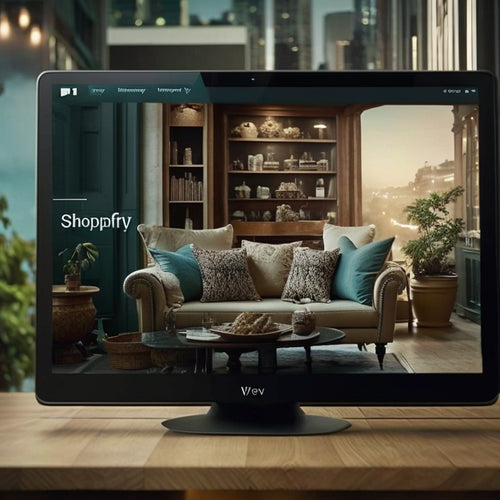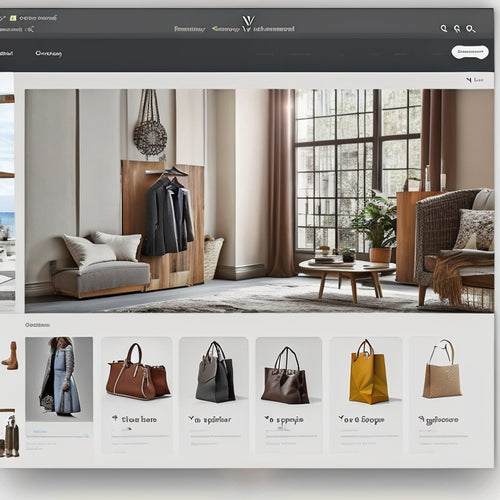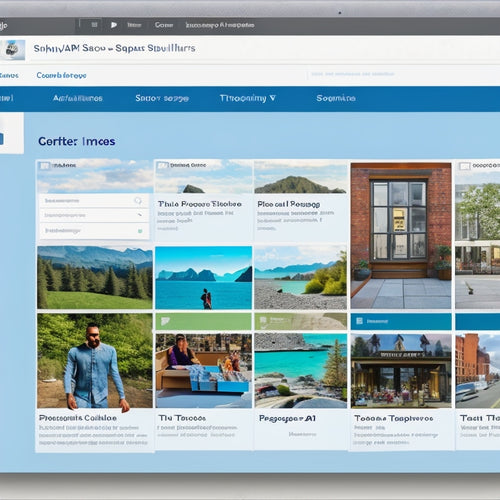
Mastering Product Setup: From Simple to Virtual
Share
You'll start by defining your product type, choosing from simple, virtual, or downloadable options. Then, set product details like name, description, category, and tags. Next, specify pricing with regular and sale prices, and manage inventory options like stock quantity and backorders. Don't forget to add custom attributes, create product bundles, and link related products for a seamless shopping experience. For virtual and downloadable products, configure them correctly to avoid issues during checkout. Finally, publish your product with a compelling story and optimized content, and you'll be well on your way to mastering product setup - and that's just the beginning of what you'll discover.
Key Takeaways
• Define product type (Simple, Virtual, or Downloadable) to determine configuration options and ensure accurate setup.
• Set product details, including name, description, category, and tags, to provide a clear product presentation.
• Configure pricing with Regular Price and Sale Price, and manage inventory options like stock quantity and backorders.
• Add custom attributes for additional product details and create product bundles to enhance upselling strategies.
• Ensure accurate inventory and shipping settings to avoid stockouts, overstocking, and shipping mishaps.
Product Configuration Essentials
To effectively establish a product, start by defining its type, as this will determine the specific configuration options that become available.
You'll have three options: Simple, Virtual, or Downloadable.
Once you've chosen, you can set the product details, including name, description, category, and tags.
Next, specify the pricing, including Regular Price and Sale Price, and configure tax settings.
You'll also need to manage inventory options, such as stock quantity and backorders.
Consider adding custom attributes to provide more product details, and consider linking related products, like Up-Sells or Cross-Sells, to enhance the customer experience.
Attributes and Related Products
You can add custom attributes to provide additional product details, making it easy for customers to find and compare products with specific features. These attributes can be added with a name and values, and you can choose to make them visible on the product page. This way, customers can filter and sort products based on these attributes.
You can also create product bundles by linking related products together, which is an effective upselling strategy. For instance, you can suggest complementary products or offer a discount for buying multiple items together. By setting up these attributes and related products, you can create a seamless shopping experience and increase average order value.
Virtual and Downloadable Options
Your e-commerce store can cater to a wide range of products, including virtual and downloadable ones, which require specific configuration to guarantee a seamless customer experience.
When setting up virtual products, check the Virtual checkbox and define them as intangible, often used with membership systems.
For downloadable products, upload the files and specify if they're downloadable only, such as software or music.
Make sure you provide access to virtual products upon purchase, so customers can instantly receive their digital goods.
Configure your virtual and downloadable products correctly to avoid any issues or confusion during checkout.
Publishing and Descriptive Details
After configuring your virtual and downloadable products, it's time to focus on publishing and descriptive details, where you'll finalize your product's presentation to customers.
This is your chance to tell a story about your product and showcase its benefits. Write a brief, attention-grabbing description that highlights its unique features and selling points.
Don't forget to optimize your content for SEO by including relevant keywords that customers might use when searching for your product.
When you're satisfied with your product's presentation, click the Publish button to make it live. Double-check your settings before going to confirm everything is accurate and complete.
Inventory and Shipping Settings
To guarantee a seamless customer experience, configure your inventory and shipping settings accurately, as this will directly impact how your product is perceived and fulfilled. You'll want to get it right to avoid stockouts, overstocking, and shipping mishaps.
Here's a breakdown of key inventory and shipping settings to take into account:
| Setting | Description | Options |
|---|---|---|
| Stock Management | Manage your stock levels | Enable/Disable Stock Management |
| Backorder Options | Allow customers to order out-of-stock products | Allow/Do not allow backorders |
| Shipping Costs | Determine how much to charge for shipping | Calculate shipping costs based on weight, dimensions, or flat rate |
| Free Shipping | Offer free shipping to customers | Enable/Disable free shipping for orders above a certain amount |
Frequently Asked Questions
How Do I Import Product Data From an Existing Catalog or Spreadsheet?
You'll import product data from an existing catalog or spreadsheet by mapping data fields, using automated imports to sync info, and performing bulk updates for efficient inventory management, ensuring accuracy and minimizing errors.
Can I Use Product Variations to Offer Different Product Sizes or Colors?
You can use product variations to offer different product sizes or colors, allowing customers to choose their preferences. This enables you to implement pricing strategies, product bundling, and inventory management, while catering to customer preferences.
Are There Any SEO Considerations When Setting up Product Pages?
"Think of SEO optimization like planting seeds for a blooming online presence. When setting up product pages, you'll want to carefully craft product descriptions that incorporate target keywords, and add descriptive image alt text to help search engines understand your product, ensuring your page ranks higher in search results."
How Do I Set up a Subscription-Based Product With Recurring Payments?
To set up a subscription-based product with recurring payments, you'll need to integrate a payment processing gateway that supports recurring transactions, focusing on customer retention by offering flexible billing cycles and clear communication about payment schedules.
Can I Limit Product Purchases to Specific Customer Groups or Roles?
"Fasten your seatbelts, time travelers! You can limit product purchases to specific customer groups or roles by creating custom pricing tiers, granting exclusive access, and assigning roles to customers, ensuring a secure and tailored shopping experience."
Related Posts
-

What Aspect Ratio Are Shopify Videos
This article investigates the aspect ratio used in Shopify videos. It explores the benefits of selecting an appropri...
-

Search Shopify Apps Refine the On-Site Search Experience, Enhancing Product Discoverability
This article explores the topic of enhancing product discoverability through the use of Shopify apps that refine the...
-

How Do I Set up A Tracking Page on Shopify
This article aims to provide a comprehensive guide on setting up a tracking page on the Shopify platform. It explore...


